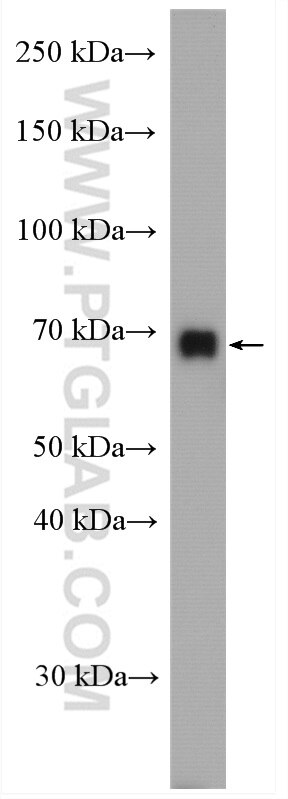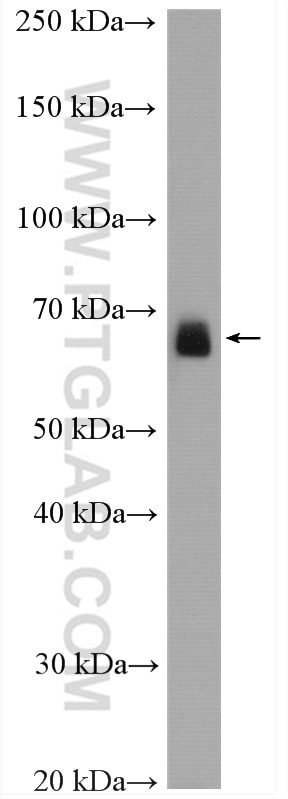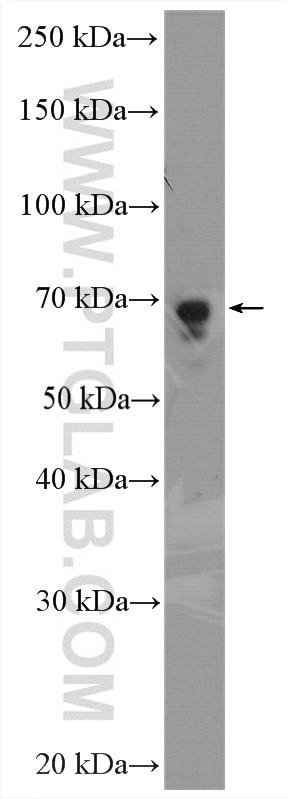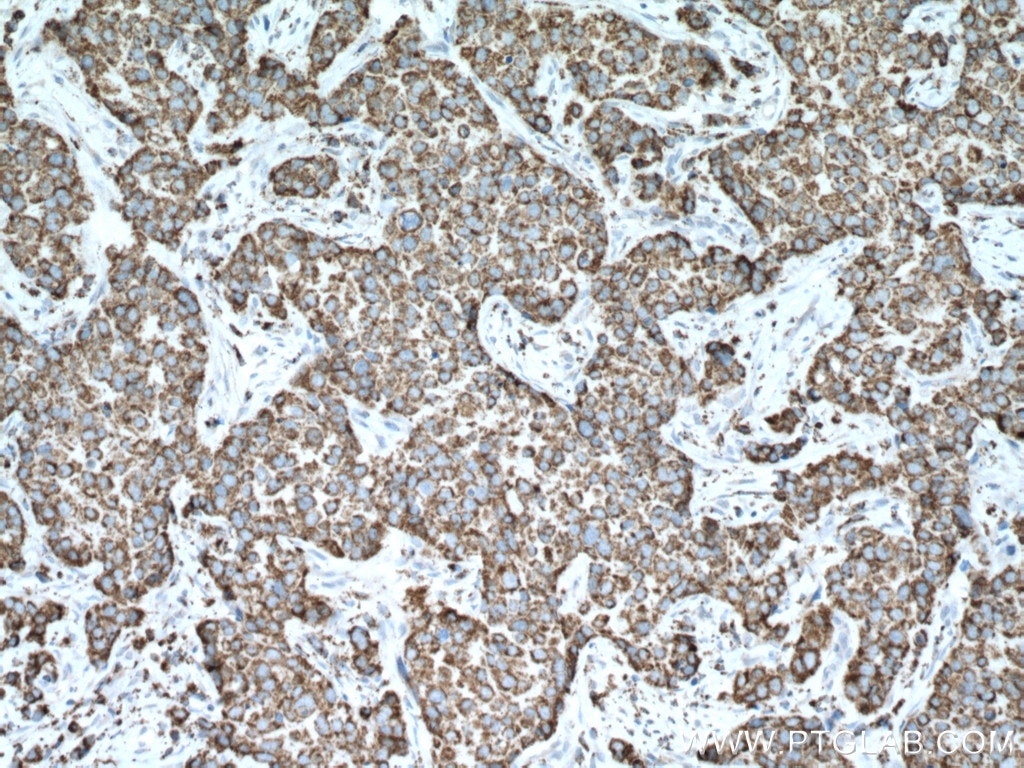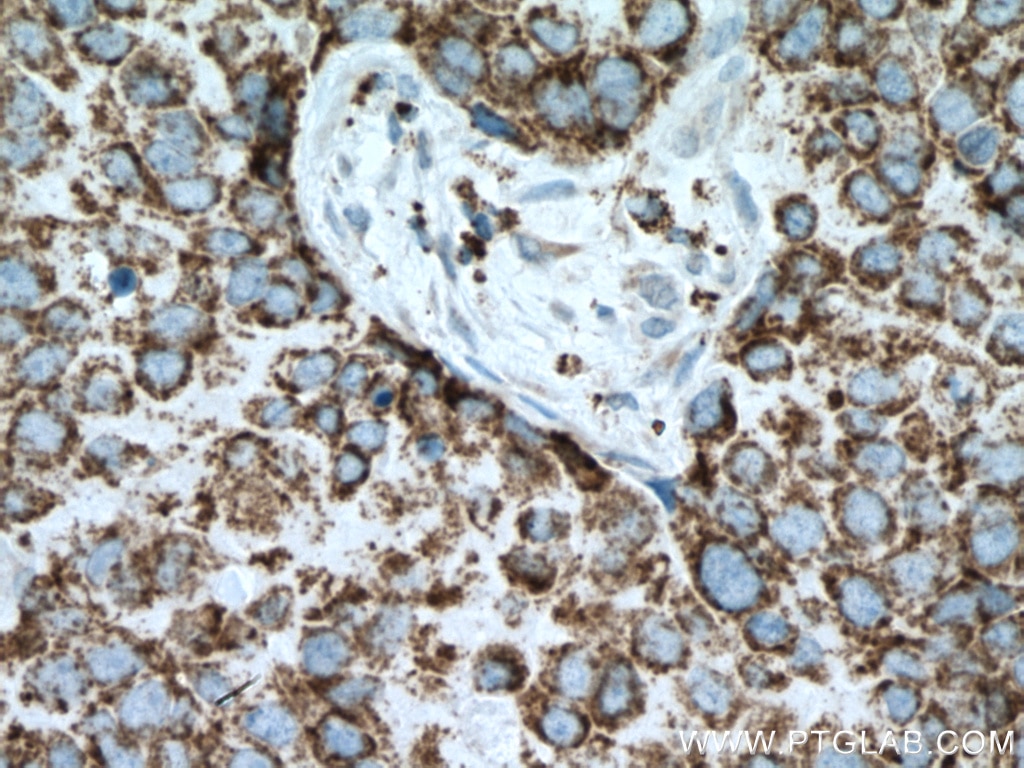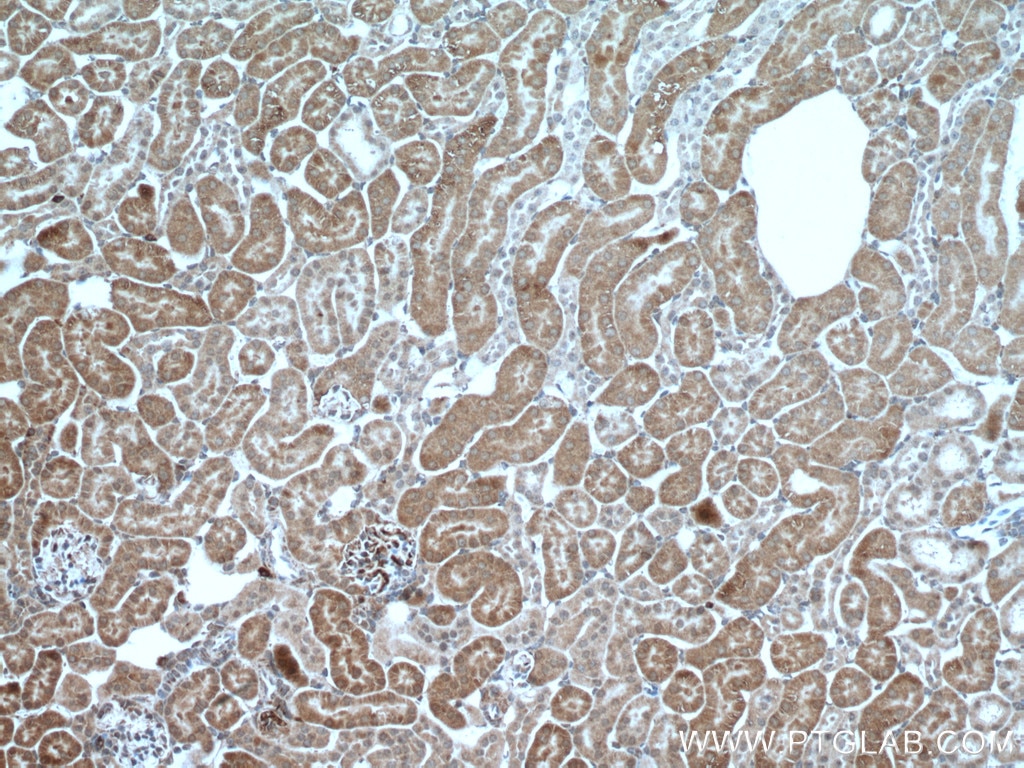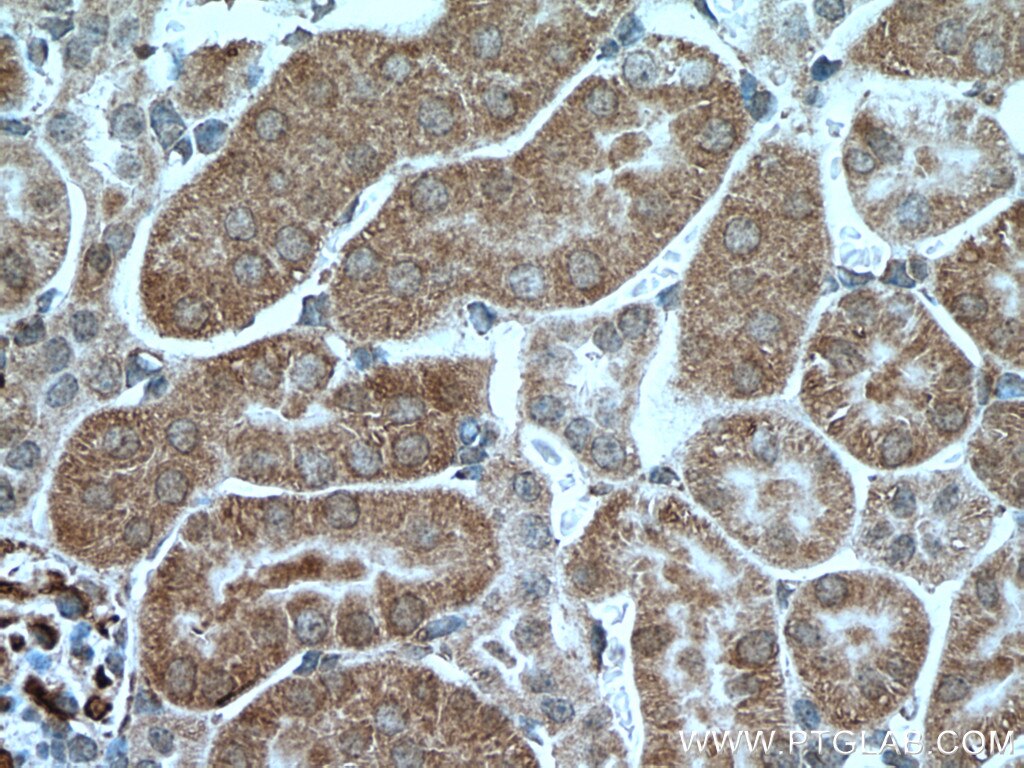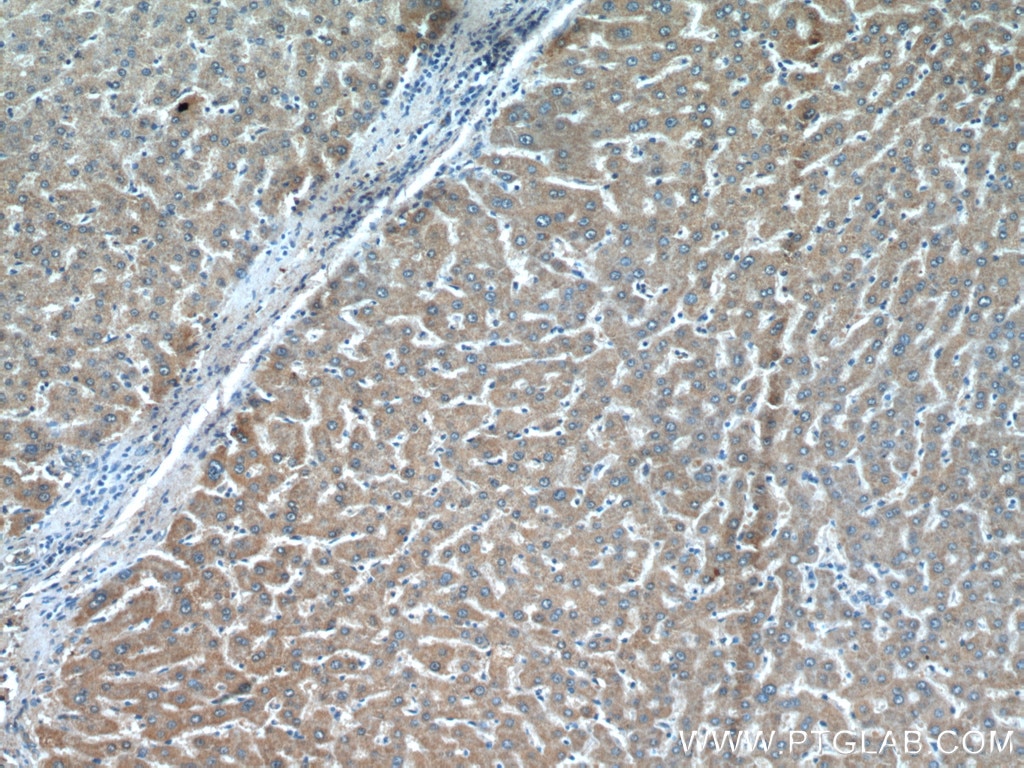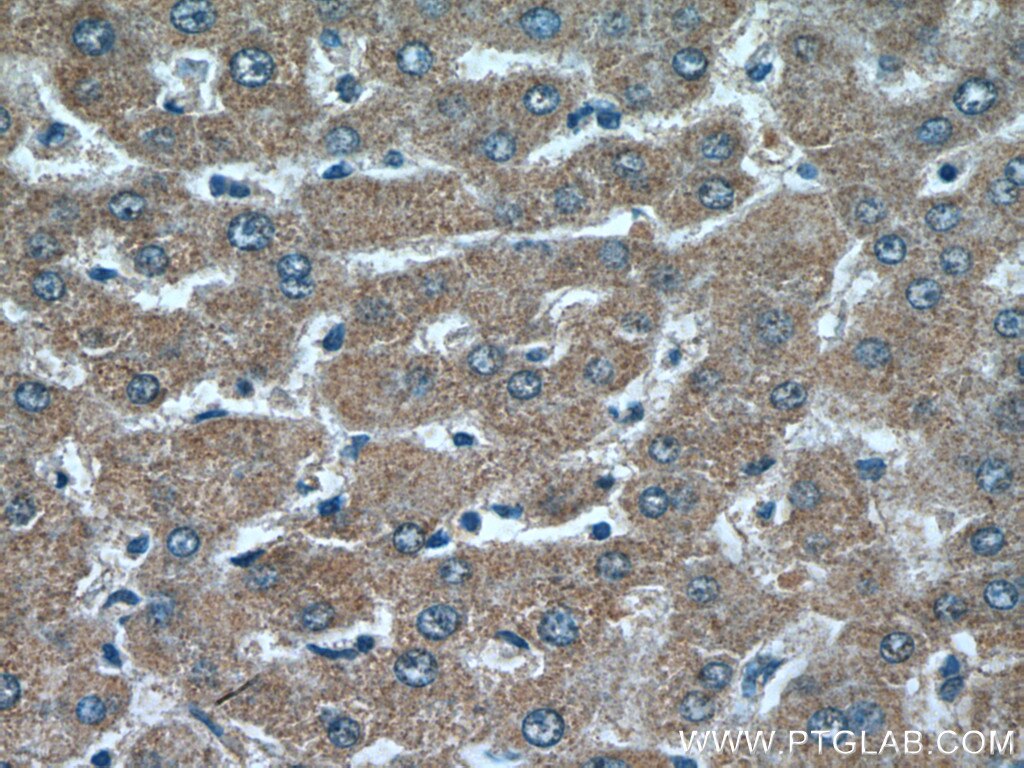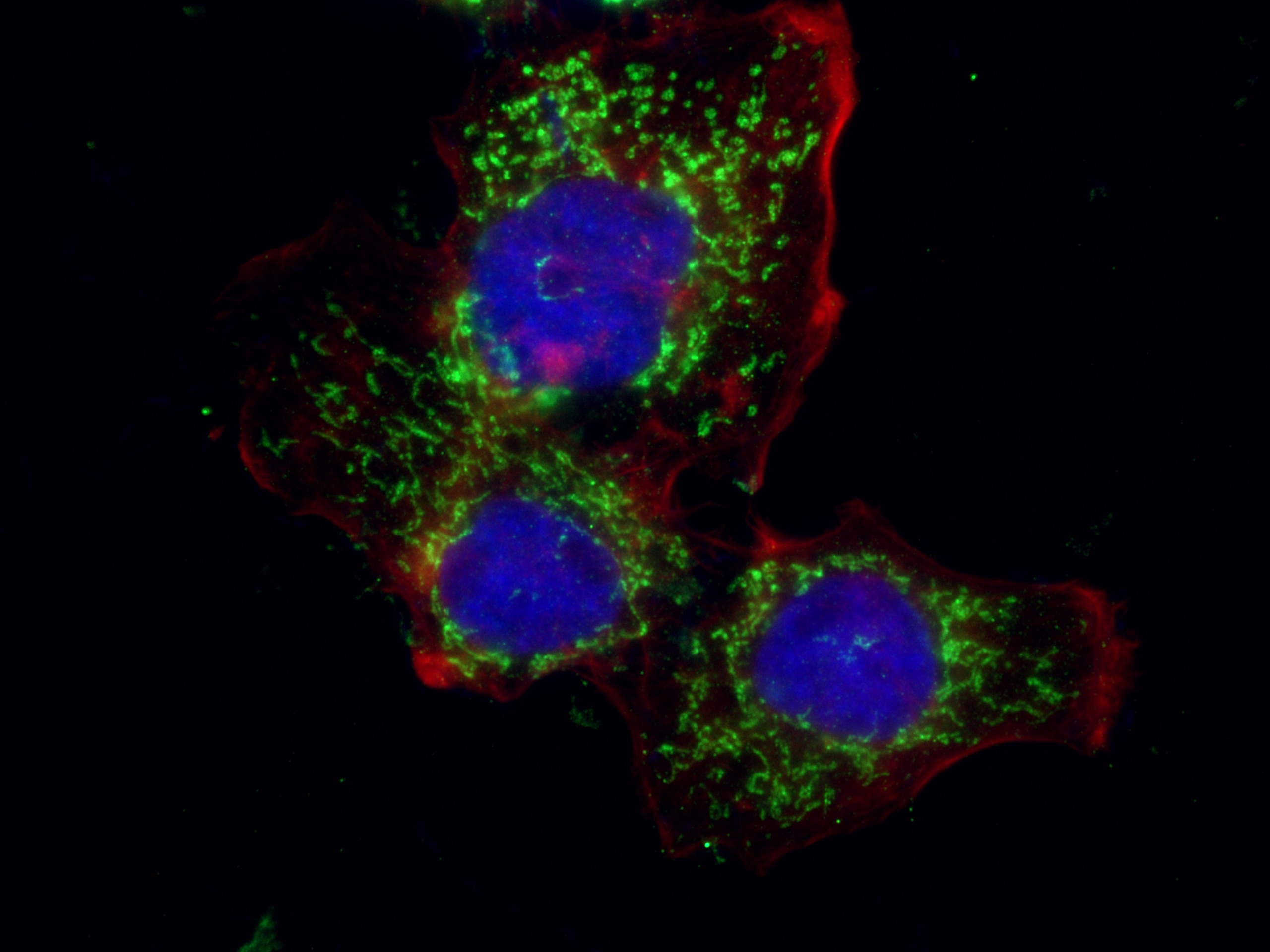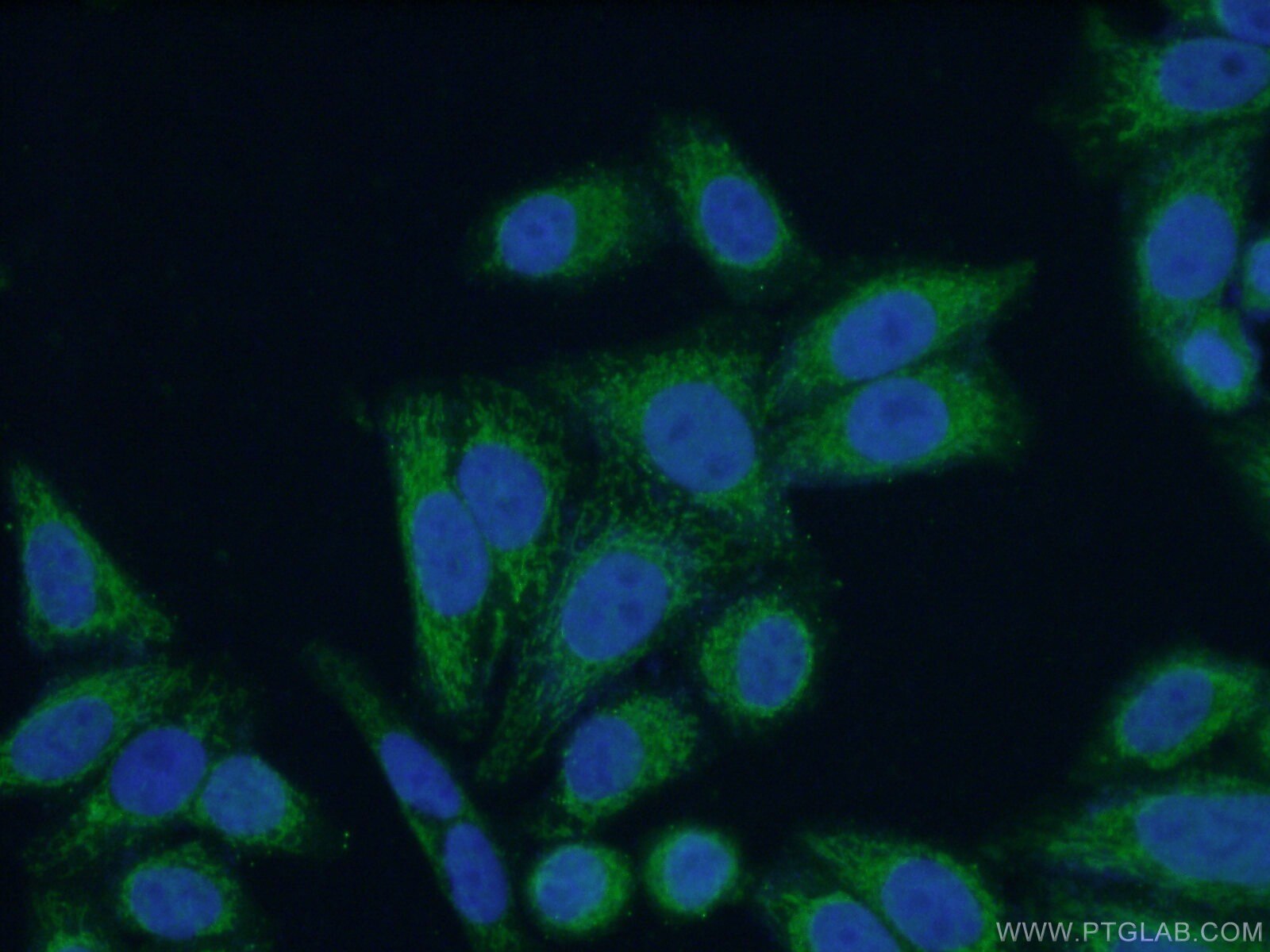PCK2 Polyklonaler Antikörper
PCK2 Polyklonal Antikörper für IF, IHC, WB, ELISA
Wirt / Isotyp
Kaninchen / IgG
Getestete Reaktivität
human, Maus, Ratte und mehr (1)
Anwendung
WB, IHC, IF, ELISA
Konjugation
Unkonjugiert
Kat-Nr. : 14892-1-AP
Synonyme
Galerie der Validierungsdaten
Geprüfte Anwendungen
| Erfolgreiche Detektion in WB | Maushirngewebe, Mauslebergewebe, Rattenhirngewebe |
| Erfolgreiche Detektion in IHC | humanes Mammakarzinomgewebe, humanes Leberkarzinomgewebe, Mausnierengewebe Hinweis: Antigendemaskierung mit TE-Puffer pH 9,0 empfohlen. (*) Wahlweise kann die Antigendemaskierung auch mit Citratpuffer pH 6,0 erfolgen. |
| Erfolgreiche Detektion in IF | MCF-7-Zellen, HepG2-Zellen |
Empfohlene Verdünnung
| Anwendung | Verdünnung |
|---|---|
| Western Blot (WB) | WB : 1:500-1:1000 |
| Immunhistochemie (IHC) | IHC : 1:100-1:1000 |
| Immunfluoreszenz (IF) | IF : 1:50-1:500 |
| It is recommended that this reagent should be titrated in each testing system to obtain optimal results. | |
| Sample-dependent, check data in validation data gallery | |
Veröffentlichte Anwendungen
| WB | See 15 publications below |
| IHC | See 2 publications below |
| IF | See 2 publications below |
Produktinformation
14892-1-AP bindet in WB, IHC, IF, ELISA PCK2 und zeigt Reaktivität mit human, Maus, Ratten
| Getestete Reaktivität | human, Maus, Ratte |
| In Publikationen genannte Reaktivität | human, Hausschwein, Maus, Ratte |
| Wirt / Isotyp | Kaninchen / IgG |
| Klonalität | Polyklonal |
| Typ | Antikörper |
| Immunogen | PCK2 fusion protein Ag6681 |
| Vollständiger Name | phosphoenolpyruvate carboxykinase 2 (mitochondrial) |
| Berechnetes Molekulargewicht | 71 kDa |
| Beobachtetes Molekulargewicht | 66-71 kDa |
| GenBank-Zugangsnummer | BC001454 |
| Gene symbol | PCK2 |
| Gene ID (NCBI) | 5106 |
| Konjugation | Unkonjugiert |
| Form | Liquid |
| Reinigungsmethode | Antigen-Affinitätsreinigung |
| Lagerungspuffer | PBS mit 0.02% Natriumazid und 50% Glycerin pH 7.3. |
| Lagerungsbedingungen | Bei -20°C lagern. Nach dem Versand ein Jahr lang stabil Aliquotieren ist bei -20oC Lagerung nicht notwendig. 20ul Größen enthalten 0,1% BSA. |
Hintergrundinformationen
PCK2(phosphoenolpyruvate carboxykinase [GTP], mitochondrial) is also named as PEPCK2, PEPCK-M and belongs to the phosphoenolpyruvate carboxykinase [GTP] family. It catalyses the irreversible conversion of oxaloacetate to phosphoenolpyruvate, an important initial step in hepatic gluconeogenesis.Defects in PCK2 are the cause of mitochondrial phosphoenolpyruvate carboxykinase deficiency (M-PEPCKD). It has 2 isoforms produced by alternative splicing with the molecular weight of 71 kDa and 48 kDa.
Protokolle
| Produktspezifische Protokolle | |
|---|---|
| WB protocol for PCK2 antibody 14892-1-AP | Protokoll herunterladen |
| IHC protocol for PCK2 antibody 14892-1-AP | Protokoll herunterladen |
| IF protocol for PCK2 antibody 14892-1-AP | Protokoll herunterladen |
| Standard-Protokolle | |
|---|---|
| Klicken Sie hier, um unsere Standardprotokolle anzuzeigen |
Publikationen
| Species | Application | Title |
|---|---|---|
Sci Rep TCF7L2 involvement in estradiol- and progesterone-modulated islet and hepatic glucose homeostasis. | ||
Mol Nutr Food Res Douchi Peptides Vy and Sfllr Improve Glucose Homeostasis and Gut Dysbacteriosis In High-Fat Diet-Induced Insulin Resistant Mice | ||
J Nat Prod Effect of 1-Deoxynojirimycin Isolated from Mulberry Leaves on Glucose Metabolism and Gut Microbiota in a Streptozotocin-Induced Diabetic Mouse Model | ||
Mol Neurobiol Phosphoenolpyruvate Carboxykinase (PCK) in the Brain Gluconeogenic Pathway Contributes to Oxidative and Lactic Injury After Stroke. | ||
Front Pharmacol Bicyclol Regulates Hepatic Gluconeogenesis in Rats with Type 2 Diabetes and Non-alcoholic Fatty Liver Disease by Inhibiting Inflammation. | ||
Food Funct Polysaccharides from Armillariella tabescens mycelia ameliorate insulin resistance in type 2 diabetic mice. |
Rezensionen
The reviews below have been submitted by verified Proteintech customers who received an incentive forproviding their feedback.
FH Kristian (Verified Customer) (06-07-2021) | PCK2 (red) is detected in proximale tubules where HIF1A-signaling is activated.
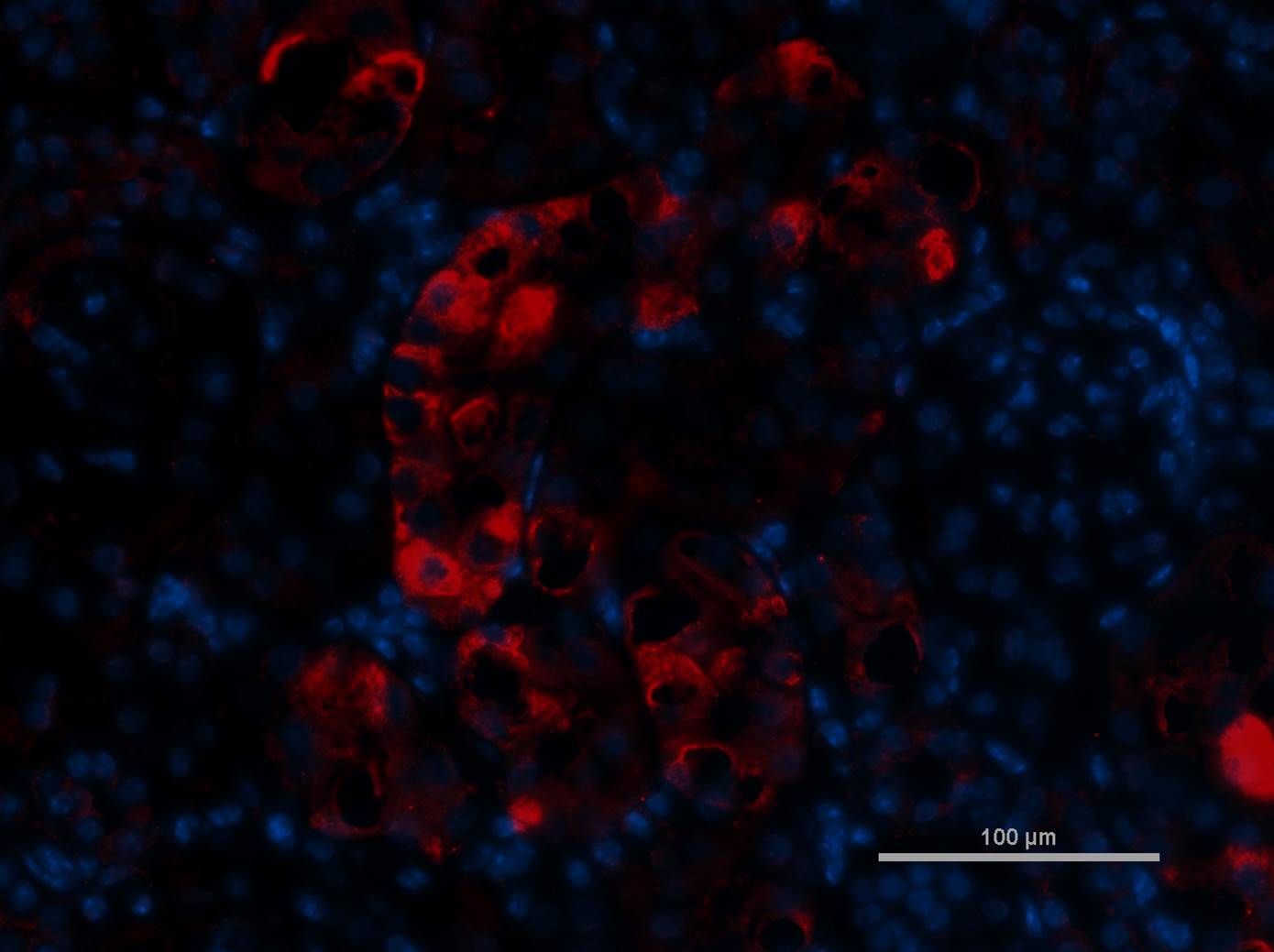 |
